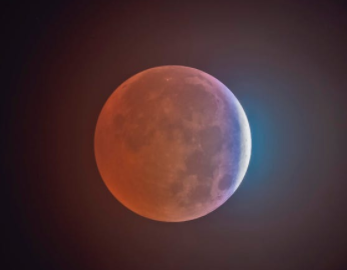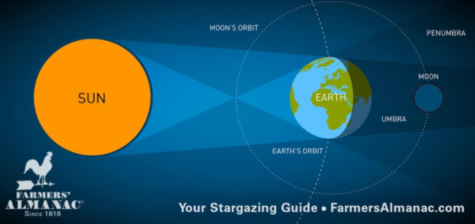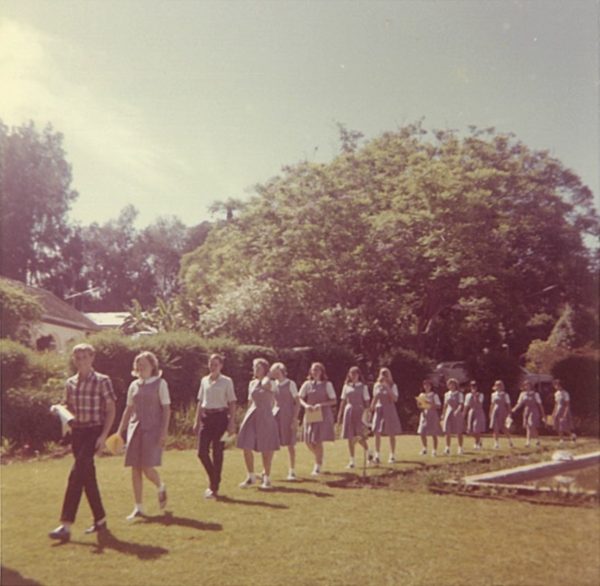The Partial Lunar Eclipse: A New Blood Moon
According to the infamous internet, anyone can see a shooting star every 10 to 15 minutes, should they have the time and patience to wait. However, I believe that seeing a shooting star is nearly sheer luck, but it was only tonight, on November 18th, 2021, that I would witness more than just a shooting star.
As the night turned dark and restless, and the breeze danced coolly off of my skin, my family and I camped out in our backyard like tourists at the beach, only more freezing. On my right sat my Mom and Dad, each fully reclined back in their beach chairs waiting for that moment of awe. My sister and I sat close together singing Mama Mia tunes and laughing our heads off until we froze to death, or what felt like or should have been hypothermia. With all of our hoodies stretched over our chilly torsos and shaking arms, as well as frilly beach-towel blankets, my family and I waited and watched.
It was only until 11:00 pm that the sky filled with true beauty (no offense to the gleaming stars in our solar system). And yes, you might be wondering: what exactly am I reading about in this article? Well, as the night filtered in and the stars smiled above, the Moon slowly dressed in its new red clothing. It was as if I was watching a great bloody battle in the sky take place and I could do nothing less than keep my eyes away from it.
Relative to more ancient times, according to Jan A. Lee from National Geographic, a partial lunar eclipse is primarily associated with a sense of evil and death that scours the Earth. In the eyes of the Inca, a Blood Moon was believed to be a war between their Moon and a murderous jaguar that would violently assault the Moon, turning it a bloody red, only then to come back down to Earth and eat their Incan tribesmen. Similarly, the Mesopotamians believed that the Moon was being harmed by seven deadly demons, where an assault on their Moon would be an assault on their King: nearly a betrayal that would leave monarchs at many Mesopotamians’ disposal (Lee, National Geographic). Ultimately, Blood Moons were created to have negative connotations, especially in relevance to violence.
However, as many folklore beliefs spread the idea that a partial lunar eclipse denotes violence, a Blood Moon, more scientifically speaking, is more simply the Moon entering Earth’s umbra as the Earth moves directly between the Sun and the Moon, giving the pale face of the night a crimson, sunset glow. Additionally, as many as 2 to 5 lunar eclipses can occur in one year and this glow can last from up to 2 to 6 hours, where the partial lunar eclipse of November 18th, 2021 would set a new world record for the longest lunar glow: lasting a total of 6 hours and 2 minutes, hopelessly leaving this record not to be reached again, as calculated by Deborah Byrd’s EarthSky science forum, until 2669 (EarthSky). Until then, all of us can begin looking forward to 2022’s first upcoming lunar eclipse on May 16th, 2022! Save the date and happy star-gazing, astronomers!






